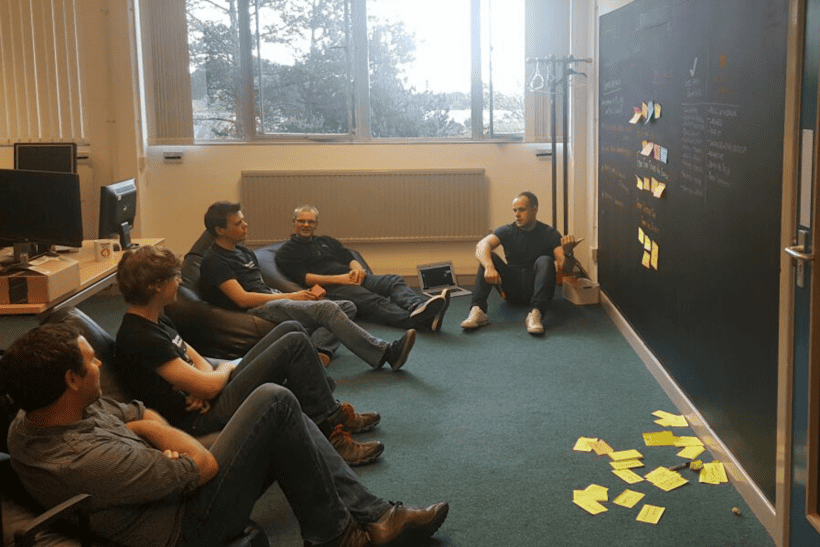Looking to set yourself up for a successful Agile Transformation? If the answer is yes, then you will have to consider how you’re going to get there by investing some time in building out your Agile Transformation Roadmap.
Over the years we have spoken with many clients and prospective clients about helping them with their agile journey. Before we embark on any Agile Transformation, McKenna Agile Consultants sit down and co-create an Agile Transformation Roadmap with them.
If you’re looking to build your own roadmap, continue reading for our ten tips on how to create an Agile Transformation Roadmap.
What is an Agile Transformation Roadmap?
An Agile Transformation Roadmap is a step-by-step plan that an organisation defines and executes in their adoption of an agile mindset. An Agile Transformation Roadmap typically contains things like (but not limited to):
- Success factors
- The people, products, solutions impacted
- Training
- Agile coaching and/or consultancy
- Agile processes adoption (such as Scrum)
- Timelines
10 Tips for Creating an Agile Transformation Roadmap
1. Start with the reason why
In order to know where you’re going and bring people with you, it’s crucial that we all understand why we are going there. Start by asking yourself “What will life look like when we get there?” and “What is the value in going through this change?”.
2. Identity metrics to guide you along the way
How will we measure our success? When identifying your success criteria, avoid ones like “XYZ% people in IT trained”. This is siloed by function and doesn’t offer clear value to the organisation. Such a metric may be better positioned as a leading indicator. What are the other leading indicators to sign post us and give us confidence as we progress?
3. Take an incremental, agile approach
Your Agile Transformation is unlikely to be complete in a month, it’s very likely to be a long-term change effort. With this in mind, break down the roadmap into small, manageable steps with lots of opportunity for reflection and refinement.
4. Remember the Agile Manifesto
“Responding to Change over Following A Plan” – the real value in building your Agile Transformation Roadmap is in the planning of the activities itself. Once you begin on the Transformation, things will change. New business offerings, external influences on the market, people moving around, progress on the Transformation at times moving more slowly than you hoped. Be prepared to review your progress and the roadmap at regular intervals based on your current pace.
5. Don’t build the roadmap in the dark
Your Agile Transformation is going to touch all aspects of the organisation. Ensure that you have input from key stakeholders and impacted people to gather feedback, gain alternative insights and establish buy in at the start.
6. Make it visible
A successful Agile Transformation requires tens, to hundreds, to thousands of people to all be aligned to the common goal. How can we expect people to get behind the transformation if they don’t know where we are going? Make your Transformation Roadmap visible by running a presentation and Q&A at the start, posting announcements in company channels/threads and making it physically visible in the office (for those who can be in the office post-COVID).
Read 5 things you must do as a leader for successful Agile Transformation here >
7. Agile Transformations are not a linear process
Different areas of the organisation may move at different speeds. Some may require more time than others. With this in mind, ensure that the steps within the roadmap are repeatable so that you can demonstrate areas of success in one area, then repeat what was successful in another area. Bonus tip – start small and slowly scale up!
8. Read Leading Change
Leading Change by Kotter is a create book for anyone who is leading a change effort at any level. Cross reference your Roadmap against Kotter’s 8 Step Change Model to give yourself the greatest chance of success.
9. Don’t reinvent the wheel
Look for examples of Agile Transformation Roadmaps, such as the Implementation Roadmap used by SAFe® (Scaled Agile Framework). If you decide to use SAFe®, this comes ready to use “out of the box”.
10. Find a partner
Finally, the biggest tip we can offer is to partner with someone who has done this before and can help build a roadmap based on experience that is tailored for you and your context.
Start Your Agile Transformation Roadmap
McKenna Agile Consultants can partner with you to define, execute, and then further accelerate your Agile Transformation Roadmap today. Get in touch with one of our team.


